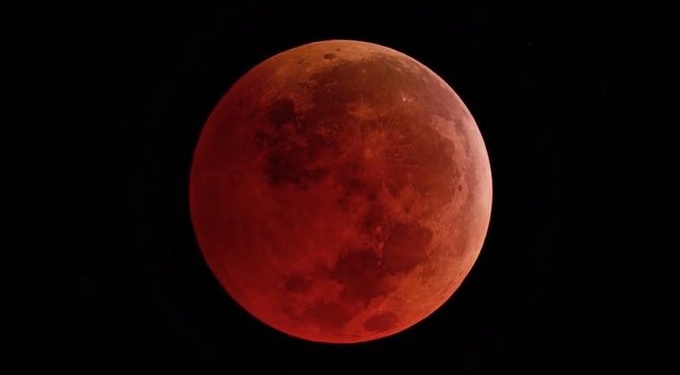
By Melissa Breyer | treehugger.com
The only total lunar eclipse of the year, the Super Blood Moon Eclipse on Jan 20-21, will be visible for its entirety in North and South America.
A moon on any night is marvelous enough, but between January 20th and the 21st, Earth’s favorite little sidekick will be putting on quite a show. Not only will it be a super moon, but a blood red super moon eclipse at that. For those of us who love to tilt are heads skyward and marvel at the goings-on up there, weather permitting, this should be a good one.
As you likely know, a lunar eclipse occurs when the Earth’s shadow passes in front of the moon. It’s not a rare phenomenon – it happens a little less than once a year. But it always seems like a special event to me; it’s the only time I can think of when us Earthbound folks get to see hints of our planet, by way of its shadow, in the sky.
RELATED ARTICLE: How to Watch the Jan 20 Super Blood Wolf Moon Lunar Eclipse Online!
(In fact, Aristotle used that observation to come to a revolutionary idea in ancient Greece. In noting that the shadows on the Moon during lunar eclipses were round, he realized that the round shadow could only be produced by a spheroid-shaped Earth. This was long before people started sailing off toward the horizon without falling off the edge of the planet.)
And there are plenty of other nifty things about the event as well. Here’s what to know:
1) The timing of the eclipse is generous
Unlike some of the sky’s swifter dramas, the eclipse will unfold at a more leisurely pace. The total lunar eclipse part will last for 1 hour and 2 minutes, while the whole shebang, from the start of the partial eclipse to the end, will last 3 hours and 17 minutes.
At 10:33 pm EST on Sunday, the edge of the moon will begin entering the umbra (Earth's shadow). The moment of greatest eclipse, when the moon is halfway through the umbra, will happen at 12:12 am EST on January 21st.
2) It will be of unusual color
The moon of a lunar eclipse is called a blood moon for the beautifully eerie reddish hue it takes on as sunlight is refracted by the Earth’s atmosphere, bending around the edges of the planet before reaching the moon, explains Walter Freeman, a physicist at Syracuse University. “Lunar eclipses … reflect our world,” astronomer and podcaster Pamela Gay tells Space.com. “A blood colored moon is created [by] ash from fires and volcanoes, … dust storms and pollution all filtering sunlight as it scatters around our world.”
3) It would give moon dwellers an even better show
NASA scientist Noah Petro puts the same thing another way, “What a lunar eclipse displays is the color of all of Earth's sunrises and sunsets reaching the moon.” Space.com explains that if someone stood on the moon during a total lunar eclipse, “Earth would appear to have a reddish ring all around it, as the person would gaze at the 360-degree sunrise and sunset they'd perceive at that particular intersection of Earth and lunar orbits.” Imagine that, the whole planet immersed in a giant circular sunrise/sunset. Amazing to consider.
4) It will be super

A lunar eclipse can happen anytime things are properly lined up during the full moon – but this one just so happens to be happening during a supermoon, one of the largest full moons of 2019. Supermoons occur when a full moon happens during perigee, the point in its orbit when it’s closest to Earth – the result can make the moon appear up to 14 percent larger and 30 percent brighter than other full moons. While some in the media may kvetch that others of us in the media make a big deal out of this, I stand by my opinion that a supermoon is worthy of its moniker. (And especially when it’s blood red, for heaven’s sake.)
In the image above, taken by NASA's Lunar Reconnaissance Orbiter, the moon is shown in two halves to illustrate the difference in the apparent size and brightness of the moon during a supermoon and a micromoon (when the moon is farthest away from Earth). I rest my case.
















